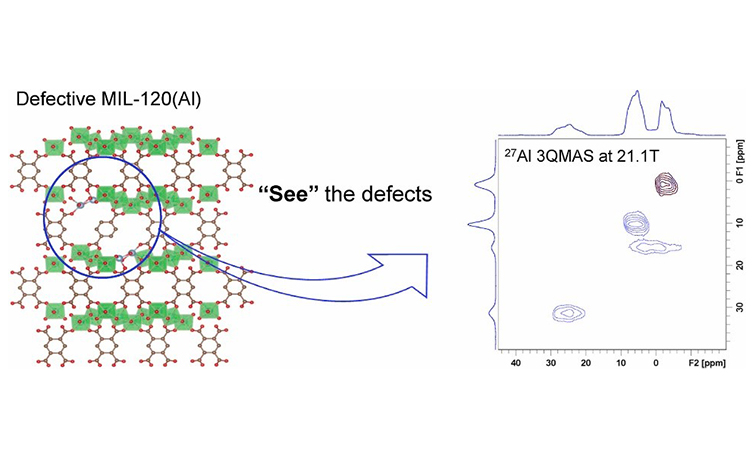
Multinuclear solid-state NMR:Unveiling the local structure of defective MOF MIL-120
Wanli Zhang, Shoushun Chen, Victor V. Terskikh, Bryan E.G. Lucier, Yining Huang*
Solid State Nuclear Magnetic Resonance 2022, 119, 101793.
DOI:10.1016/j.ssnmr.2022.101793
Abstract
Metal-organic frameworks (MOFs) are emerging materials with many current and potential applications due to their unique properties. One critical feature is that the physical and chemical properties of MOFs are tunable. One of the methods for tuning MOF properties is to introduce defects by design for desired applications. Characterization of MOF defects is important, but very challenging due to the local nature and short-range ordering. In this work, we have introduced the ordered vacancies (the defects) in the form of the coordinatively unsaturated sites (CUSs) into the framework of MOF MIL-120(Al). The creation of ordered vacancies is achieved by replacing one quarter of the BTEC (1,2,4,5-benzenetetracarboxylate) with BDC (benzene-1,4-dicarboxylate) linkers. Both parent and defective MOFs were characterized by multinuclear solid-state NMR spectroscopy. 1H MAS NMR is used to characterize the hydrogen bonding in these MOFs, whereas 13C CP MAS NMR confirms unambiguously that the BDC is incorporated into the framework. One-dimensional 27Al MAS NMR provides direct evidence of the coordinatively unsaturated Al sites (the defects). Furthermore, 27Al 3QMAS experiments at 21.1 T allow direct identification of one penta-coordinated and three chemically inequivalent octahedral Al sites in the defective MIL-120(Al). Two of the above-mentioned octahedral Al sites are in the domain which appears defect-free. The third octahedral Al site is near the defective site. This work clearly demonstrates the power of solid-state NMR spectroscopy for characterization of defective MOFs.
